|
| |
| |
DENIS
GIFFORD'S
MONSTERS OF THE
MOVIES
(1977)
|
|
Monster
#18 - Doctor X
|
|
| |
|
| |
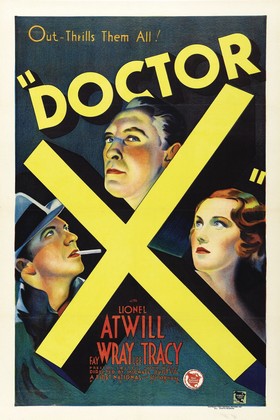 |
|

USA,
1932
A First National Pictures
Production, distributed by Warner Brothers
76 mins, 2-strip Technicolor and Black &
White, 1.37:1 aspect ratio
Shot on 35mm film
Director - Michael Curtiz
Writer - Howard Comstock, "The Terror",
1928/31 theatrical play
Screenplay - Robert Tasker, Earl Baldwin
Cinematographer - Ray Rennahan (Technicolor),
Richard Tower (b&w)
Production Design - Anton Grot
Make-Up - Max Factor, Ray Romero, Perc Westmore
(uncredited)
Special Photographic Effects - Fred Jackamn Jr.
(uncredited)
Editor - George Amy
Music - Leo F. Forbstein, Bernard Kaun
Lionel
Atwill (Dr. Jerry Xavier), Fay Wray (Joanne
Xavier), Lee Tracy (Lee Taylor), Preston Foster
(Dr. Wells), John Wray (Dr. Haines), Harry
Beresford (Dr. Duke)
|
|
| |
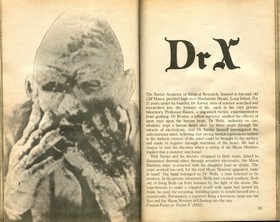
(Carousel Books / Transworld
Publishing)
|
|
Dr X was one of the many ghouls
and fiends my 13-year old self had never heard of
before browsing Denis Gifford's alphabetic
roll-call in Monsters of the Movies -
and I distinctly remember not being very
impressed either, mostly based on the still image
used. Whilst it actually
looks rather good when reduced in size, clicking
on the image reproduced here will reveal just how
blurry and grainy the picture in the book
actually is. It wasn't until I finally got to see
the movie that I was able to appreciate the
monstrosity that is Dr X, along with the
remarkable qualities of the film.
Doctor X was
produced jointly by First National and Warner
Brothers in 1932, and therefore before the Motion
Picture Production Code was rigidly enforced
in 1934, essentially leading the major motion
picture studios to self-censor well into the
1950s.
|
|
| |
| Some of the themes woven into the
storyline of Doctor X, such as sadistic murder,
rape, cannibalism and prostitution, would have been toned
down sustantially or dropped outright had the movie been
shot two years later. |
| |
| Based on a theatrical play by
Howard W. Comstock, Doctor X was
directed by Michael Curtiz and starred Lionel
Atwill, Fay Wray and Lee Tracy - all well-known
classic Hollywood names to this day. Setting
apart Doctor X from many contemporary
(horror) movie productions, the film was shot in
the early two-color Technicolor process (in the
end the color prints were reserved for major
cities, whilst black-and-white prints - filmed by
a separate camera unit - were shipped to small
towns and foreign markets). Doctor
X is a solidly made period horror picture,
but it is the fact that it was shot in
Technicolor's "Process 3" - the first
horror movie made in colour - that gives it a
very special and almost unique atmosphere which
elevates this movie far above many of its
contemporary cousins.
"Process 3" was
Technicolor's advance in colour film processes;
instaed of cementing two separate prints into a
single print, colour was now achieved by dye-imbibition,
involving separate red- and green-filtered
frames.
|
|
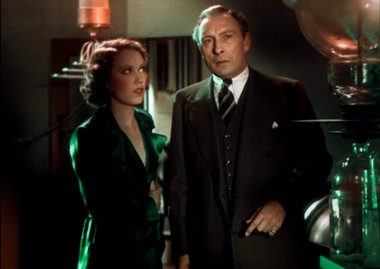
|
|
| |
| These were shot by a special
Technicolor camera that simultaneously shot two
consecutive frames of a black-and-white film behind red
and green filters. |
| |
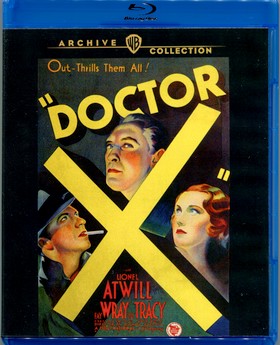
|
|
It didn't catch on with the
movie-going public enough to make it financially
interesting, and as a result only few movies were
produced in what was then called "two-color
Technicolor" (mostly by Warner Brothers). Many of the original
negatives were discarded by Technicolor in 1948,
and all colour prints of Doctor X were
believed to have been lost. For decades, the
movie was thus only accessible through the black
& white version, which had been shot
separately, side-by-side with the colour version
(comparison of the two versions shows only minor
differences, if at all).
But then an original
colour nitrate film of Doctor X was
discovered in the personal collection of studio
mogul Jack L. Warner in 1969 (Rhee, 2021). It was
donated to the UCLA Film & Television
Archive, which conducted a state of the art 4K
scan restauration with precise colour separation
and digital clean-up in 2020, which was then
released by Warner Brothers' Archive Collection
on Blu-ray in April 2021.
Although labelled as being
restricted to viewing in the US, the Blu-ray is
actually region code-free and thus also playable
in Europe, enabling me to view Doctor X
in a way that Denis Gifford could only have dreamed
about.
|
|
| |
The storyline of Doctor X at times feels
somewhat convoluted and requires the usual 1930's horror
movie total suspension of belief, but within those
limitations it works really well, helped by on-point
direction and acting and a set of highly atmospheric
sets. It also introduced the concept of the serial killer
to the Hollywood horror genre (Rhee, 2021) and created a
genre star:
"Fay Wray's scream
when used as bait to catch the Moon Monster of Doctor
X made her the First Lady of the Horror Film." (Gifford,
1973)
But the crowning glory is the
two-colour Technicolor which, contrary to its name, does
render more than just red and green (skin tones, for
example). However, both green and red hues are very
dominant, and they give the film an atmosphere all of its
own, reinforcing it to the point of a truly masterful
movie.
|
| |
"In terms of
its color, the film made innovative use of
specialty lighting. It saves its red and
orange colors for its climactic scenes, like
when the mad Moon Killer “creates”
himself with globs of “synthetic
flesh.” In another scene where Fay Wray
finds her father in the makeshift morgue
after the first laboratory murder and they
realize that the dead body has been
cannibalized, the entire scene is saturated
in solid green. Green lighting is
traditionally a horror color; it’s the
antithesis of warm colors, it’s unreal
(...) it’s a truly different experience
now to see what the Technicolor process could
actually do. Its triumph of color design and
cinematography now comes front and
center." (Scott MacQueen, in Rhee
2021)
|
|
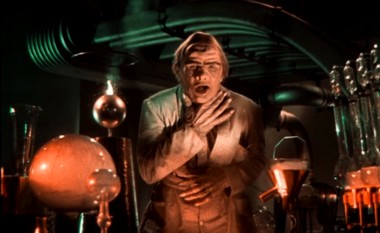
|
|
| |
Doctor X is one of those
movies that has been somewhat underrated ever since it
was made.
"Doctor X was
actually very well received in color. In the trade
papers, exhibitors reported that the color version
was a sensation and made a big difference in their
box office numbers. The black-and-white version was
mainly distributed in Europe. Why didn’t Jack
Warner recognize the money-making potential of the
color version? Possibly because he didn’t like
horror movies in the first place and the studio
didn't have a history of making them." (Scott
MacQueen, in Rhee 2021)
An excellent pick by Denis
Gifford, and an essential horror movie thankfully
preserved in its intended visual form.
|
| |
| |
|
| |
| |
| |
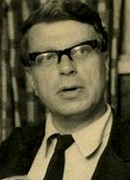 |
|
Denis Gifford on Doctor
X
in A Pictorial History of
Horror Movies (1973)
"Make-up
played the major part in Doctor X (1932),
this time with the added thrill of
two-colour Technicolor (...) Dr Xavier,
club-footed red-herring, marked the
horror-film entrance of Lionel Atwill,
starchy architect from Croydon. His brisk
and British ways suited the genre (...)
his fierce face and sly eyeballs bridged
a curious gap between Middle-European
police inspectors and mad doctors."
|
|
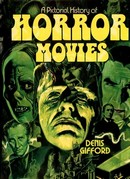 |
|
| |
|
| |
| |
| SOURCES GIFFORD
Denis (1973) A Pictorial History of Horror Movies,
Hamlyn
RHEE Jennifer
(2021) "Restoring
"Doctor X," the First All-Technicolor Horror
Feature", UCLA Film & Television Archive
Blog, 12 July 2021
|
| |

Back to main index page
|
| |
|
| |
The illustrations presented here are
copyright material.
Their reproduction in this non-commercial review
and research context is considered to be fair use
as set out by the U.S. Copyright Act of 1976, 17
U.S.C. par. 107
and in accordance with the the Berne Convention
for the Protection of Literary and
Artistic Works.
All images from
Monsters of the Movies
(Carousel/Transworld) were scanned from my
personal copy purchased in 1977
All images of Blu-ray or DVD covers were scanned
from my personal copies
Page created 9
August 2023
Last updated 20 December 2024
(c)
2023-2024

|
|
| |










